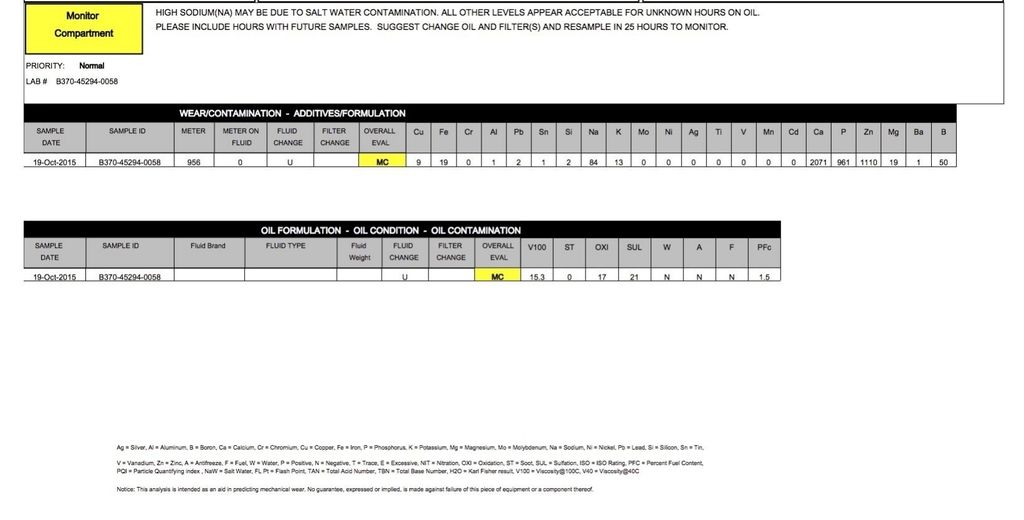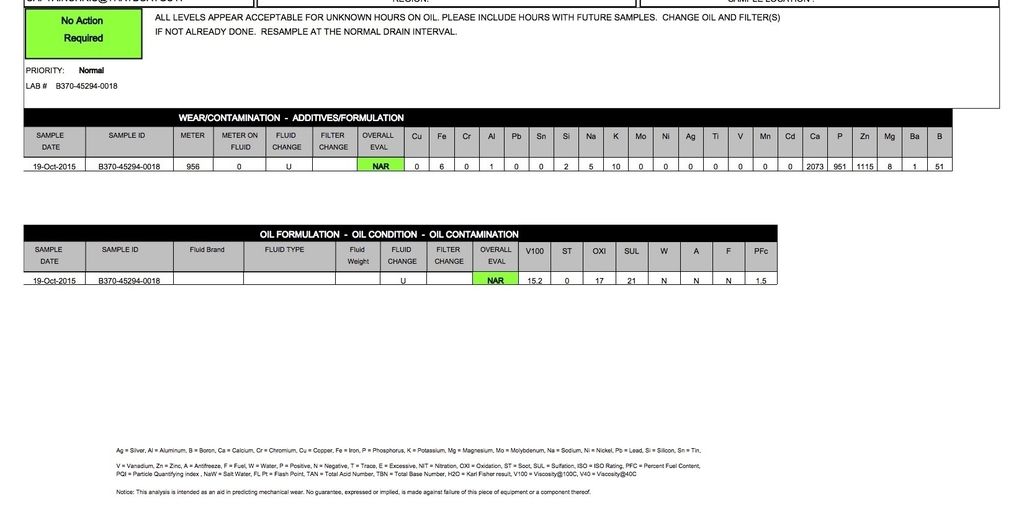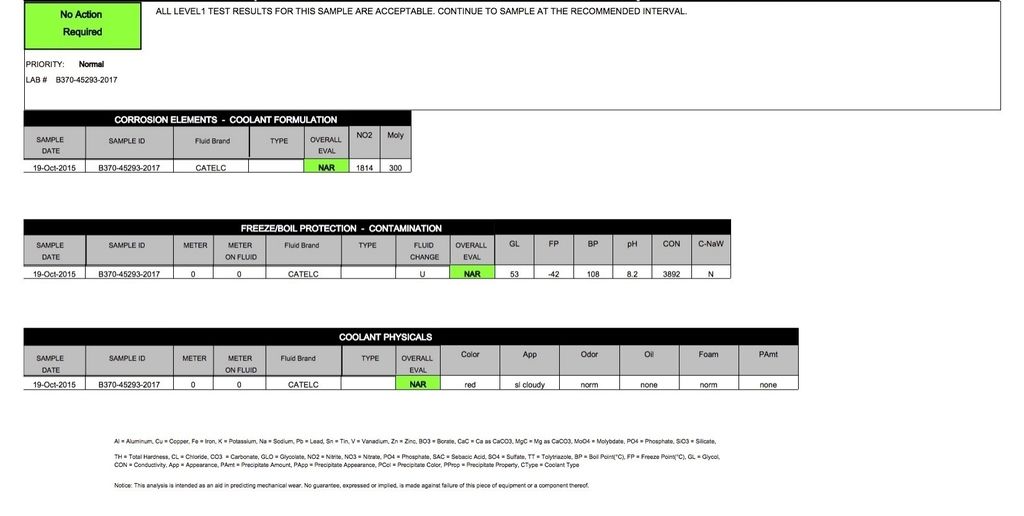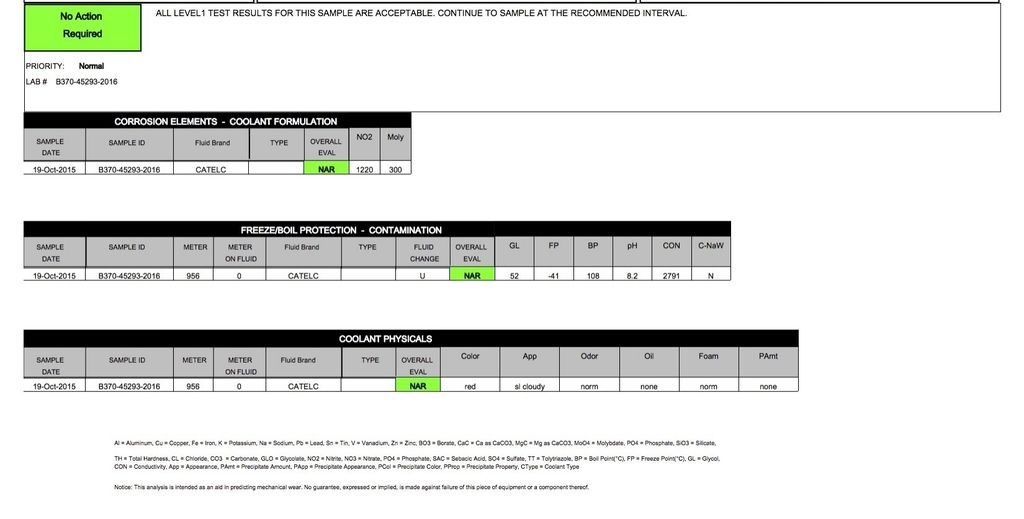Hi all,
My wife and I are looking to buy a 1998 400DB. It has the CAT 340 HP 3116 engines. After the sea trial, they took oil samples.
The port engine came back Green, or "No action required." The stbd engine came back yellow, or "Monitor." Samples were sent to H.O.Penn (my local authorized CAT dealer).
I got the yellow rating because of high sodium levels. They were 84 in the stbd engine. Only 5 in the Port engine. I'm assuming its PPM, but it doesn't say that anywhere on the report. The report also came back with this description...
"HIGH SODIUM(NA) MAY BE DUE TO SALT WATER CONTAMINATION. ALL OTHER LEVELS APPEAR ACCEPTABLE FOR UNKNOWN HOURS ON OIL.PLEASE INCLUDE HOURS WITH FUTURE SAMPLES. SUGGEST CHANGE OIL AND FILTER(S) AND RESAMPLE IN 25 HOURS TO MONITOR. "
I need to call HO Penn first thing in the morning to get more info on this. I want to know what the range is. When would it become a "Red" or "Stop running the engine immediately" type of issue?
My other question is, if these are closed-cooled engines, how can salt water possibly get in there? (yes, it's a salt water boat).
We were supposed to close on this boat on Friday and take delivery this weekend. Now my wife and I are both freaking out immensely. We don't know what to do.
Any help, clarification, or insight is appreciated.
My wife and I are looking to buy a 1998 400DB. It has the CAT 340 HP 3116 engines. After the sea trial, they took oil samples.
The port engine came back Green, or "No action required." The stbd engine came back yellow, or "Monitor." Samples were sent to H.O.Penn (my local authorized CAT dealer).
I got the yellow rating because of high sodium levels. They were 84 in the stbd engine. Only 5 in the Port engine. I'm assuming its PPM, but it doesn't say that anywhere on the report. The report also came back with this description...
"HIGH SODIUM(NA) MAY BE DUE TO SALT WATER CONTAMINATION. ALL OTHER LEVELS APPEAR ACCEPTABLE FOR UNKNOWN HOURS ON OIL.PLEASE INCLUDE HOURS WITH FUTURE SAMPLES. SUGGEST CHANGE OIL AND FILTER(S) AND RESAMPLE IN 25 HOURS TO MONITOR. "
I need to call HO Penn first thing in the morning to get more info on this. I want to know what the range is. When would it become a "Red" or "Stop running the engine immediately" type of issue?
My other question is, if these are closed-cooled engines, how can salt water possibly get in there? (yes, it's a salt water boat).
We were supposed to close on this boat on Friday and take delivery this weekend. Now my wife and I are both freaking out immensely. We don't know what to do.
Any help, clarification, or insight is appreciated.









